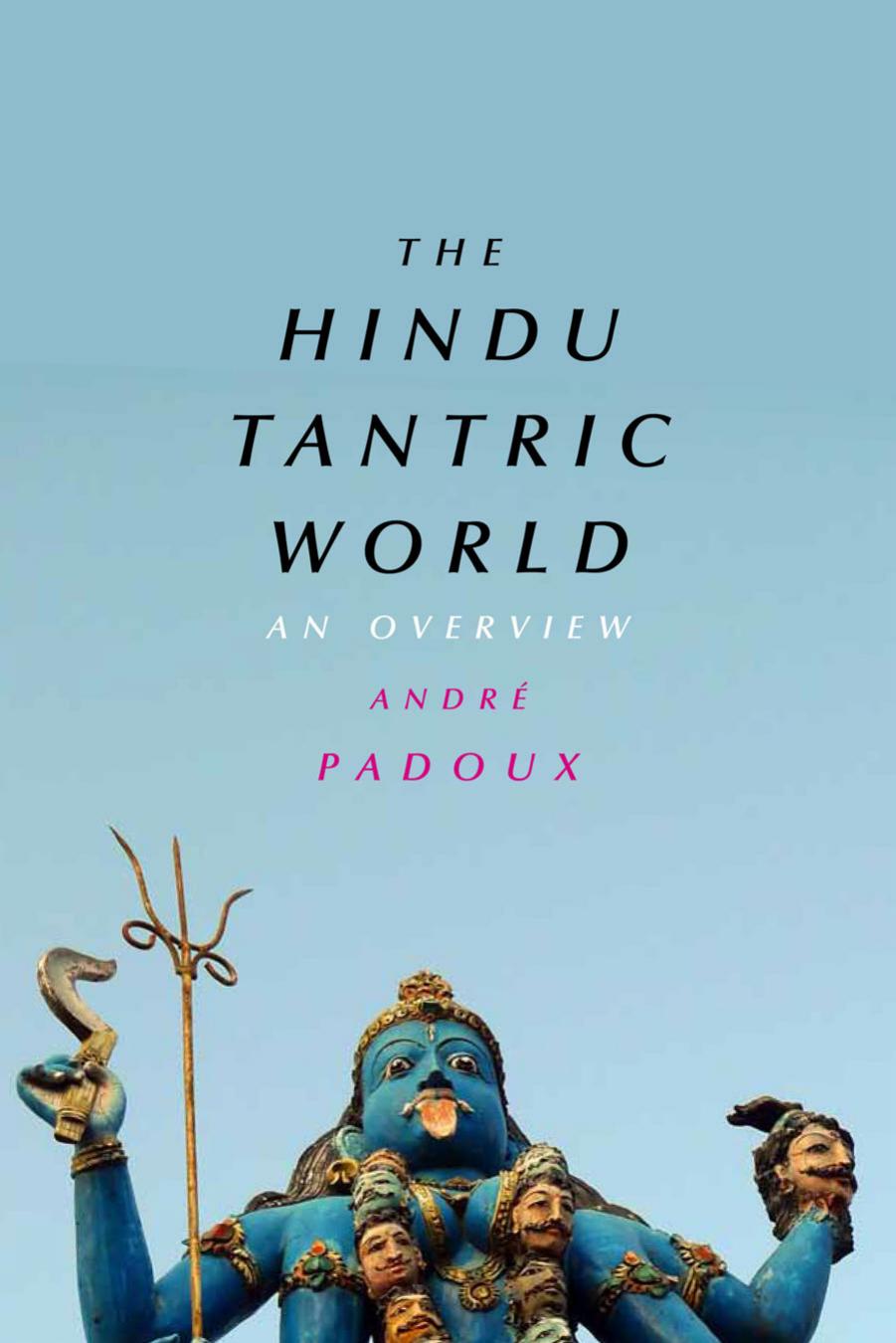The Hindu Tantric World: An Overview by André Padoux

Author:André Padoux [Padoux, André]
Language: eng
Format: epub, pdf
ISBN: 978--0-226-42412--5
Publisher: The University of Chicago Press
Published: 2017-02-01T16:00:00+00:00
Worship—Pūjā
The ritual worship of deities (pūjā) is a particularly interesting instance of this complex ensemble of bodily actions and mental images. This practice is all the more complex because Tantric pūjā aims at identifying the ritual performer with the deity he worships. This ritual worship is traditionally composed of two parts. The first, “inner” (āntara), part is entirely mental, resting on the image of the body. The second, “external” (bāhya), part is the visible, concrete worship using material supports such as icons, vessels, or diagrams, and the accomplishment of physical ritual actions.4
The first part, often considered the main one because it aims at divinizing the performer, is entirely a work of creative (or rather evocative, for only prescribed images are to be visualized) imagination. It is also an imagination working on the body. It begins with a purification of the body of the worshipper, which aims at creating a “divine body” that will replace his ordinary, impure one for the duration of the pūjā. This is necessary because, as the saying goes, “one who is not god cannot worship God.”5 Only a pure, divine being can approach the deity. To this end, the worshipper, who has already been submitted to seven different “baths”—of water, fire, mantras, and so on—will (in the Śaiva case) enter the consecrated area for worship and mentally burn his body with the fire of the astra mantra, then scatter the ashes by blowing on them “a wind made of śakti.” Because he is deemed to have no body at this point, using mantras he will replace it by the different parts of Sadāśiva’s (the “Eternal Śiva”) body—luminous, with five heads, with all his “members” and ornaments—to whom he is to offer a throne in his heart. He is then to bathe and to clothe this new body with garments adorned with jewels. All this is done mentally while uttering the mantras that represent and symbolize all that he is to “see.” One can easily realize the difficulty of such a virtuosic mental exercise, unless it is lazily done by merely reciting mantras, without any attempts at mental concentration, as is often likely to be the case.6 However, even if it is not performed with the intense mental concentration theoretically needed, the worshipper must feel somehow “transformed,” since the deity he worships is imagined as present in him, body and soul, taking his place, as it were. Of course, this does not give immediate liberation, but by purifying the soul of the officiant, it somehow opens the way toward it.
The previous paragraphs summarize all too briefly a long description given in the Mgendrāgama. There are other descriptions of this process in other texts, with variants, but they all aim at first purifying and thus “destroying,” then at “reconstructing” the body of the performer. I would like to mention here a picturesque variant of the process described by the twelfth-century Southern author Aghoraśivācārya. There, the adept imagines his body as a banyan tree, which he plants and makes to grow.
Download
The Hindu Tantric World: An Overview by André Padoux.pdf
This site does not store any files on its server. We only index and link to content provided by other sites. Please contact the content providers to delete copyright contents if any and email us, we'll remove relevant links or contents immediately.
| Chakras | Gandhi |
| History | Rituals & Practice |
| Sacred Writings | Sutras |
| Theology |
Fingersmith by Sarah Waters(2010)
Kundalini by Gopi Krishna(1824)
The Bhagavad Gita by Bibek Debroy(1668)
Indian Mythology by Devdutt Pattanaik(1623)
Wheels of Life by Anodea Judith(1608)
The Yoga of Jesus: Understanding the Hidden Teachings of the Gospels by Paramahansa Yogananda(1527)
The Man from the Egg by Sudha Murty(1500)
Autobiography of a Yogi (Complete Edition) by Yogananda Paramahansa(1488)
Chakra Mantra Magick by Kadmon Baal(1386)
The Book of Secrets: 112 Meditations to Discover the Mystery Within by Osho(1354)
Avatar of Night by Tal Brooke(1258)
The Sparsholt Affair by Alan Hollinghurst(1244)
Sparks of Divinity by B. K. S. Iyengar(1227)
Karma-Yoga and Bhakti-Yoga by Swami Vivekananda(1221)
The Bhagavad Gita (Classics of Indian Spirituality) by Eknath Easwaran(1207)
Gandhi by Ramachandra Guha(1195)
The Spiritual Teaching of Ramana Maharshi by Ramana Maharshi(1174)
Skanda Purana (Great Epics of India: Puranas Book 13) by Bibek Debroy & Dipavali Debroy(1138)
Hinduism: A Very Short Introduction (Very Short Introductions) by Knott Kim(1120)
